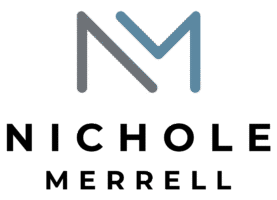Pricing your home correctly from the start is one of the most important factors in a successful sale. Homes that are priced too high often sit on the market for months, causing buyers to wonder if something is wrong and eventually forcing a price reduction. On the other hand, a home priced competitively attracts more buyers, generates interest quickly, and can even spark multiple offers, sometimes selling above the listing price. In short, the right price helps you sell faster, with less stress, and for the maximum value.
Understanding pricing strategy is critical for sellers and I always stress this out when I work with my clients. It’s not just a number on a listing, it’s a calculated approach based on market data, buyer behavior, and your own goals. Overpricing can cost you both time and money: homes that linger tend to sell for less than they would have if priced correctly from the beginning. Buyers today have access to real-time market data and comparison tools, so an overpriced home risks being overlooked while similar, better-priced homes draw attention and generate offers.
A well-planned pricing strategy does more than attract buyers; it sets the tone for the entire selling process. Homes that are strategically priced often spend fewer days on the market, receive stronger offers, and position sellers for a smoother negotiation and closing process. Conversely, mispricing can lead to frustration, extended listing times, and even reduced sale prices due to market perception. Understanding these mechanisms as a seller puts you in a better position from the very start.

Top Pricing Strategies Agents Use to Price Your Home Right
Top real estate agents combine data, experience, and strategic thinking to determine the ideal listing price. Some of the most effective strategies that I rely on include:
- Comparative Market Analysis (CMA) – Agents examine recently sold homes in your neighborhood that are similar in size, condition, and features. This analysis helps determine a price that reflects true market value.
- Price Banding / Psychological Pricing – Buyers often filter their searches by round numbers. Setting your home at a strategic price point, like $299,900 instead of $300,000, ensures it appears in more searches and reaches a broader audience.
- Market Momentum / Time-Sensitive Pricing – Launching at a slightly lower, competitive price can generate immediate interest and create a sense of urgency among buyers. This approach often leads to multiple offers and stronger final sales prices. I have had listings sell for hundreds of thousands over asking price because we were able to create urgency through time-sensitive pricing.
- Value-Add Pricing – Unique upgrades and features, such as remodeled kitchens, outdoor living spaces, or finished basements, can justify a higher listing price. Agents quantify these improvements to highlight their market value.
- Absorption / Days-On-Market Analysis – Using historical data, agents predict how long a home is likely to stay on the market at different price points. This strategy helps balance speed and value, ensuring your home doesn’t linger unnecessarily.
- Seller Goals & Flexibility – Pricing decisions also account for your timeline, financial goals, and willingness to negotiate. I always try to integrate these factors to recommend a number that works for both the market and your personal objectives.
To summarize…
By combining these strategies, I create a pricing plan that maximizes visibility, attracts serious buyers, and positions your home to sell quickly and profitably. Pricing isn’t just about a number, it’s about understanding the market, anticipating buyer behavior, and making strategic decisions that protect your investment.


Leave a Reply